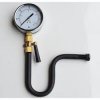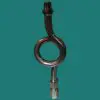Or how to prevent them...
Got a couple of long (10m) 22mm copper flow and return running from front to back of the house between the 1st floor joists (running parallel with them). Where the 15mm Ts come off I'll leave plenty of space in the notches- what is the best way of 'securing' the 22s between the joists so they don't creak and groan? (At the moment I'm thinking 50 x 25 noggins each 1500mm or so with big notches in them and just rest the (insulated) 22s in the notches rather than using the usual very tight plastic clips). Any thoughts?
PS Using copper due to solid fuel heat source so not allowed plastic. Plus I like copper
Got a couple of long (10m) 22mm copper flow and return running from front to back of the house between the 1st floor joists (running parallel with them). Where the 15mm Ts come off I'll leave plenty of space in the notches- what is the best way of 'securing' the 22s between the joists so they don't creak and groan? (At the moment I'm thinking 50 x 25 noggins each 1500mm or so with big notches in them and just rest the (insulated) 22s in the notches rather than using the usual very tight plastic clips). Any thoughts?
PS Using copper due to solid fuel heat source so not allowed plastic. Plus I like copper





